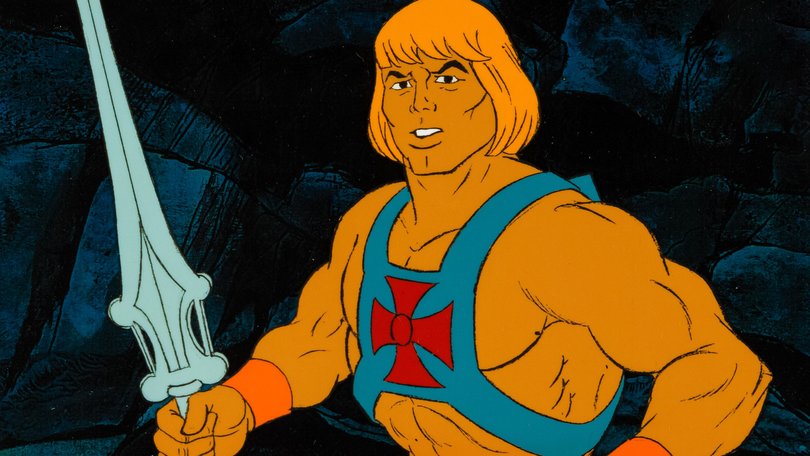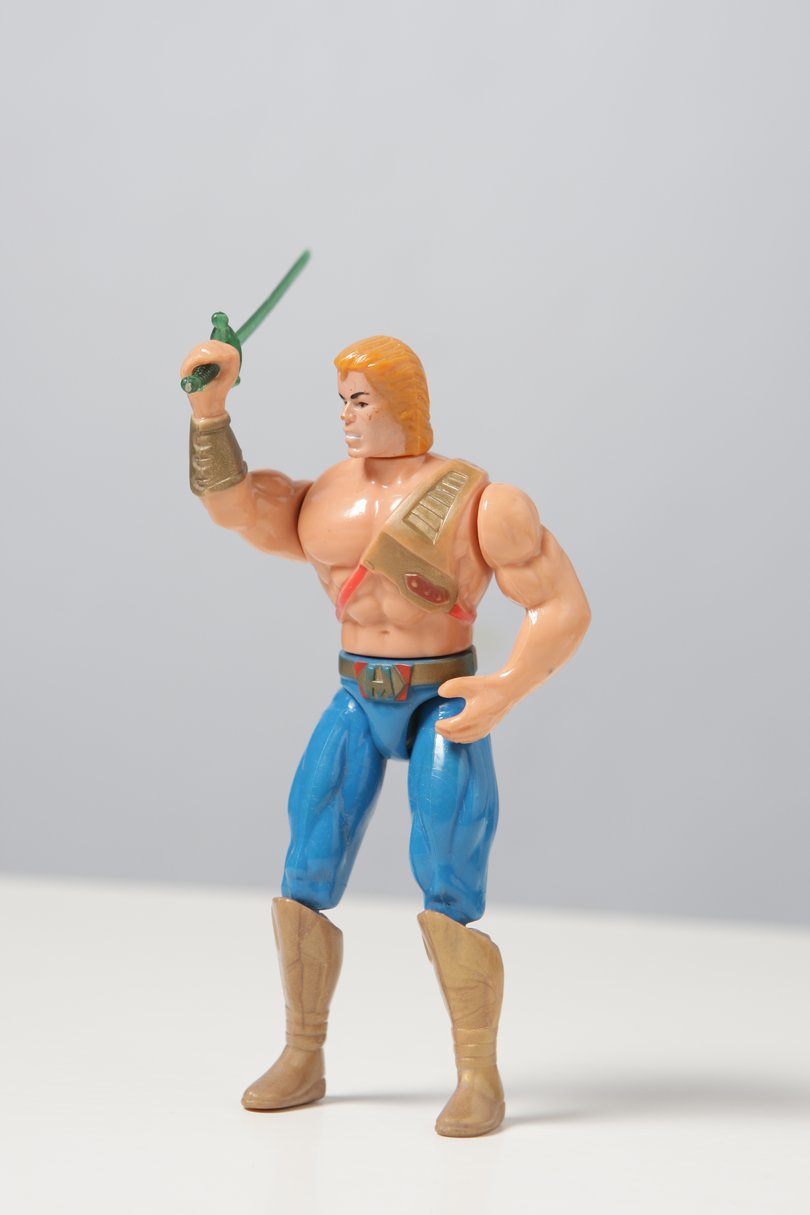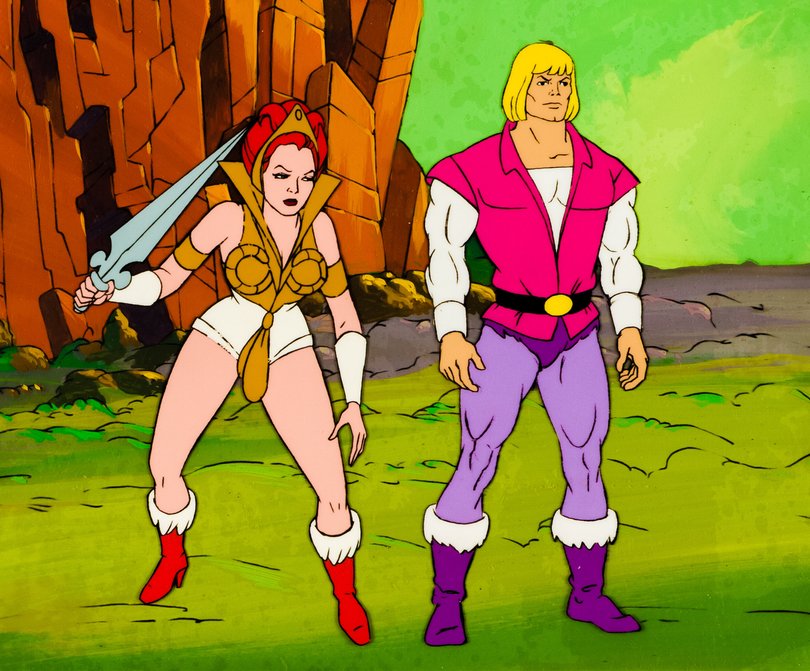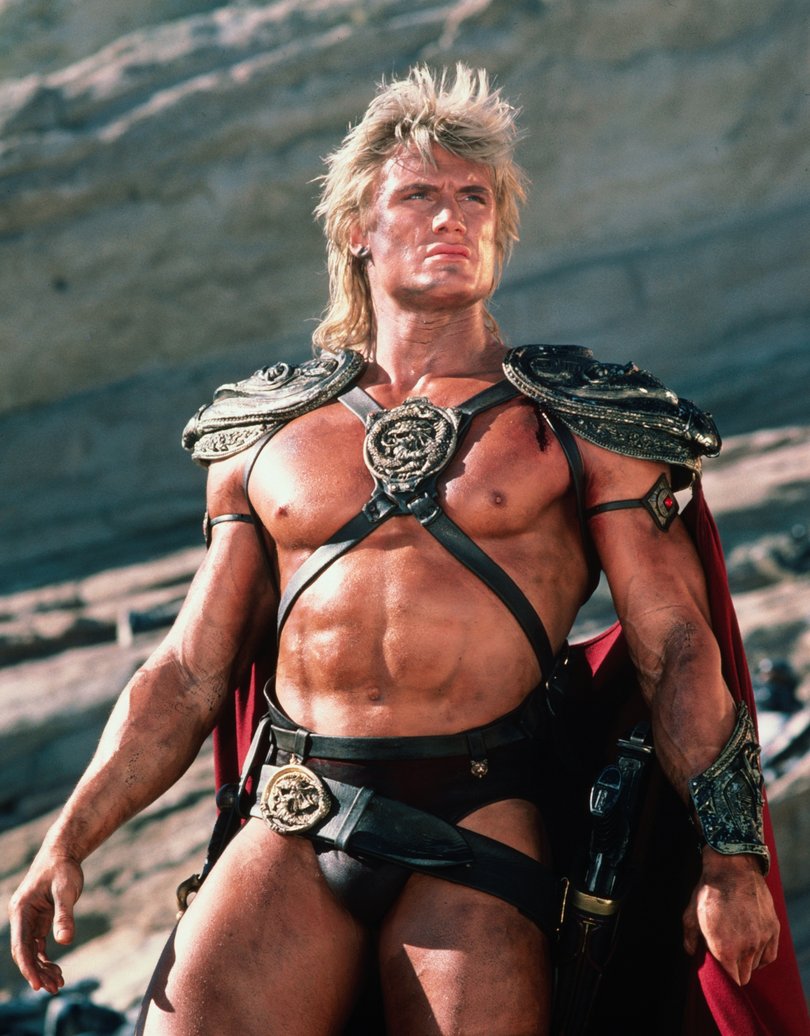Masters of the Universe 2026 movie: How Ronald Reagan paved the way for beloved Gen X icon

By the power of Grayskull, Nicholas Galitzine has the power.
The British actor best known for his roles in romances The Idea of You and Red, White and Royal Blue will soon recast his image as He-Man in the upcoming Masters of the Universe movie.
Galitzine posted on social media that the production has wrapped filming in England, and accompanied it with a teaser image of himself in the character’s iconic costume, albeit from behind and mostly in silhouette.
Sign up to The Nightly's newsletters.
Get the first look at the digital newspaper, curated daily stories and breaking headlines delivered to your inbox.
By continuing you agree to our Terms and Privacy Policy.Calling it a “role of a lifetime” that he put “everything into”, Galitzine’s Masters of the Universe movie isn’t due out for another year, but it’s also been a long time coming. The actor was the third person to be cast in this project, which has been in various stages of development since 2007.
It will also star Camilla Mendez, Alison Brie, Idris Elba, Morena Baccarin and as the villain Skeletor, Jared Leto – although Leto is embroiled in controversy after nine women last week accused the Oscar winner of sexual impropriety, which the actor has denied.
The movie is being directed by Travis Knight, who also helmed the Transformers spin-off Bumblebee.

Especially for Gen X kids, Masters of the Universe was a formative part of their childhood pop cultural experiences.
In the past four decades, there have been seven animated series and two movies (one a cartoon, the other a live-action starring Dolph Lundgren) in the Masters of the Universe franchise, but none of them or this upcoming release would’ve happened if it hadn’t been for the 40th US president.
That’s right, you can thank Ronald Reagan for He-Man.
When Reagan came to power in 1981, he had promised a wave of deregulation across a range of industries. The idea, he had argued, was that government had to get out of the way of private enterprise and “trickle-down economics” would eventually benefit all.
The merits of that are, at best, debatable, although the widening wealth gap in the decades since certainly suggests that Reagan’s ethos didn’t quite bear out in practice.
One of the areas he had been keen on deregulating was television, and he appointed Mark Fowler as the head of the US Federal Communications Commission, who set about swinging a scythe through rules around advertising.

In 1969, the American TV network ABC broadcast a Mattel-sponsored children’s cartoon series called Hot Wheels, which its critics argued would amount to nothing more than a 30-minute ad for the toy company’s products. While the network argued it was not, the FCC at the time had, by 1971, deemed it commercial material. It was soon axed.
When Fowler took over the FCC, almost every regulation went out the window. By September 1983, a Pac-Man TV show premiered, a collaboration between Nintendo and Hanna-Barbera studios.
The following day, He-Man and the Masters of the Universe broadcast its first episode of an eventual 130.
The He-Man action figurine had debuted in 1982, a five-and-a-half-inch toy of a muscular male with a name ambiguous and transposable enough to be put into any scenario.
He was created as a counter to the success of Star Wars toys, which Mattel had declined to manufacture, balking at the $750,000 licensing fee. But after Star Wars figures took off, Mattel knew it had to invent something that could capture the same market.

Roger Sweet, a lead designer working for Mattel, claimed to be the brains behind the character, although the company has not officially acknowledged this.
He-Man was released as a hero figure alongside his nemesis, Skeletor, and before the year was out, Mattel would introduce Teela, Mer-Man, Stratos and Zodac.
While kids could play with them as they wished, Mattel built stories around its new toy line by including in the box mini-comics that told the story of He-Man and his power sword doing battle against Skeletor on the planet Eternia.
The real success of the toy line came when the TV cartoon debuted a year later. Produced by Filmation, He-Man told the tale of Prince Adam, who could conjure his alter ego He-Man by wielding his power sword and proclaiming, “By the power of Grayskull, I have the power!”. He would be transformed with secret powers and become the most powerful in the universe.
He draws his powers from the mysterious Castle Grayskull, which He-Man must prevent Skeletor from conquering.

The series ran for two seasons across 130 episodes but was re-syndicated in the years following, and spawned the spin-off, She-Ra, about his sister, Princess Adora, as well as video games, DC comics, magazines, and TV revivals every subsequent decade.
The cartoons and the toys were hugely popular for a handful of years in the 1980s, but the brand eventually fell out of favour. A 1987 movie starring Lundgren, Frank Langella, Courteney Cox, Barry Livingstone and Christina Pickles couldn’t revive its failing fortunes.
But it remained in the consciousness of the kids who grew up glued to the adventures of Masters of the Universe, and who would go on to become filmmakers and studio executives.
The legacy of Reagan’s deregulation of TV advertising saw a glut of kids’ shows based on products, including My Little Pony, G.I. Joe, Care Bears and Transformers. As long as children were watching the shows, they were also buying the toys.
After the success of the Barbie movie in 2023, Masters of the Universe is not the only movie Mattel has in the works. There are also upcoming productions of Matchbox Cars, Bob the Builder, Barney, Uno and, yes, even Hot Wheels.
It’s come full circle.

